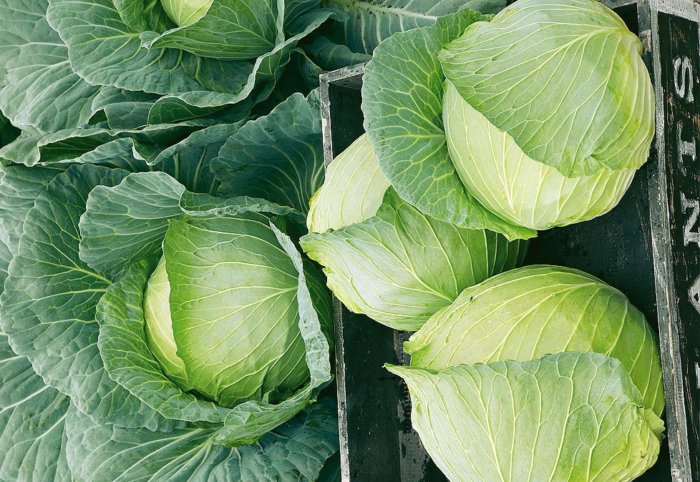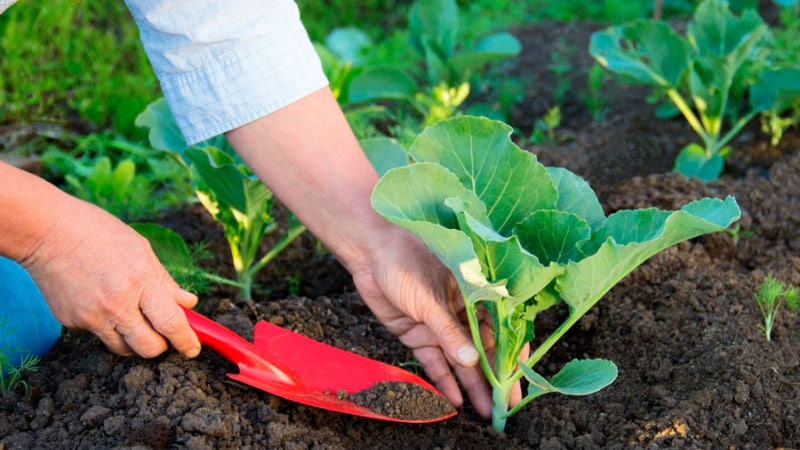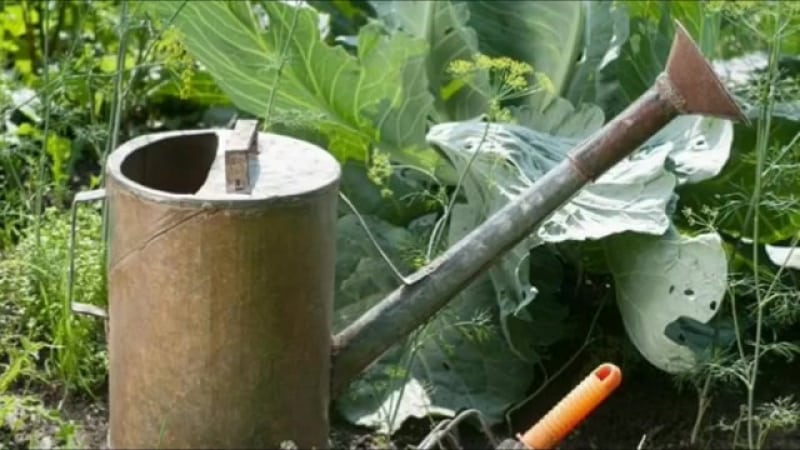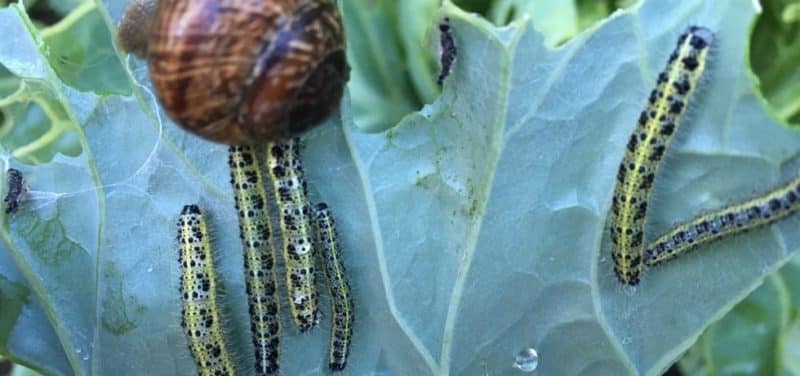Universal cabbage variety Snow White with excellent taste
Of all the universal varieties of white cabbage, Snow White has a special place. Amazing taste, a lot of useful substances, ease of care have long earned the love of farmers and connoisseurs of plant foods. What are the features of the variety, how to grow the crop - read on.
Description and characteristics of the Snow White cabbage variety
At first glance, Snow White looks similar to other varieties of white cabbage, but a knowledgeable gardener can easily distinguish it. The culture differs not only in taste, but also in appearance, as well as ripening time and resistance to cold.

Origin and development
Snow White is a variety of Ukrainian origin. Breeders from the Ukrainian Research Institute of Vegetable and Melon Growing have developed a new plant with improved taste and nutritional qualities through group cross-pollination of various varieties of cabbage.
Breeding history
For group cross-pollination, Ukrainian breeders used the varieties Zimovka 1474, Amager 611, Denish Ballhead, Dauerweiss, Zimnyaya Gribovskaya 2176 and some others, after which they selected the most successful result.
Initially, Snow White was grown in Ukraine and Kazakhstan, but thanks to its qualities it quickly gained popularity, and is now successfully cultivated throughout the CIS.
Chemical composition, trace elements and vitamins, beneficial properties
The variety of white cabbage is characterized by low calorie content - 27 kcal per 100 g, but at the same time a high content of vitamins such as A, B1, B2, B5, C, K, PP, rare vitamin U with anti-atherosclerotic and antihistamine properties, and microelements - potassium, calcium, zinc, magnesium, iodine, iron, phosphorus. Additional medicinal properties are given to Snow White by an impressive amount of folic and pantothenic acids.
Cabbage perfectly stimulates the immune system, has anti-inflammatory properties, increases metabolism, and has a positive effect on the functioning of the cardiovascular system. Eating this product is especially useful for kidney diseases, gout, cholelithiasis and ischemia.
Attention! Any varieties of cabbage should be carefully included in the diet if you have high stomach acidity. It is especially necessary to limit the consumption of raw cabbage.
Features of application
Since Snow White is a late variety, this manifests itself in some stiffness of the leaves. Therefore, it is rarely used in its raw form. But it is considered one of the best varieties for pickling and salting - it produces pickles, which the longer they are stored, the tastier they become. This cabbage is also used to prepare borscht, soups, vegetable side dishes, cabbage rolls, stuffing for pies and much more.
Ripening period
When sowing seeds for seedlings in March and April and transplanting at the age of 30-40 days, Snow White ripens in early September. From the moment the first shoots appear until the heads of cabbage are harvested, an average of 130-150 days pass.
Productivity
The universal variety Snow White is especially in demand by farmers due to its high yield. The marketable yield of the variety is 4-8 km per 1 sq. m, and with good care you can harvest 10 kg of cabbage.The yield also increases when feeding cabbage with mineral and organic fertilizers. The average weight of a head of cabbage reaches 5 kg.
Disease resistance
Subject to all agrotechnical requirements, Snow White has average resistance to fungal diseases and garden pests. Common diseases - clubroot, blackleg, peresporosis - are prevented by using the drugs "Fundazol", "Fitosporin", "Baktofit" and "Planriz".
Cold resistance
Snow White is characterized by increased frost resistance, which allows harvesting even in late autumn. The variety is able to tolerate frosts down to -10°C without loss of quality characteristics. However, it is better not to leave the heads of cabbage until there is severe frost.
Read also:
Ornamental cabbage: cultural features
Sowing and features of growing Japanese cabbage
How to prepare Korean cauliflower for the winter: a classic recipe and its variations
Characteristics, description of the appearance of leaves and heads of cabbage, taste
Snow White's head is formed by large leaves of light green or bluish-green color with a diameter of up to 16 cm. The leaf blades have a medium-wrinkled surface with slight venation and smooth or slightly wavy edges. The head is dense, with a shiny waxy coating, with a small round stalk and a short petiole. The pulp of cabbage in cross section is white.
The vegetable in its raw form tastes juicy, sweet and sour, and refreshing. When boiled, baked and fried, it acquires tenderness and additional sweetness.
Growing regions and climate requirements
Snow White cabbage is recommended to be grown in the temperate and warm climate of the central regions of Russia.In general, the variety is adapted to the domestic climate, and its high frost resistance allows it to be grown even in the northern regions.
Advantages and disadvantages of the Snow White variety
White cabbage of this variety is valued for:
- great taste;

- high seed germination;
- large size fork;
- crack resistance;
- frost resistance;
- universal application;
- keeping quality;
- high content of nutrients.
The disadvantages of the variety include average immunity to diseases and garden pests, and some rigidity of cabbage leaves.
Difference from other varieties and hybrids
The main distinguishing feature of Snow White is its late ripening period. Thanks to this, cabbage is stored longer than others, while practically not losing vitamins and microelements for eight months. The taste of this variety of cabbage, intended for long-term storage, only improves over time.
Attention! Late-ripening varieties of cabbage are also valuable because when stored until the next harvest, nitrates do not accumulate in them.
Another difference between Snow White lies in agricultural technology - the timing of sowing, planting, and germination differs from the characteristics of its early and mid-ripening “brothers.”
Features of planting and growing
To obtain strong and healthy shoots, seeds are sown in late February or early March. After two months, the grown seedlings are transplanted into the garden bed.
Preparation
The soil mixture for sowing is prepared in the fall. To do this, mix 5 kg of humus, 5 kg of turf soil and 10 tbsp. l. ash. It is better not to use soil from the garden, so as not to infect the cabbage with infections and bacteria.
Semyan
Before sowing, the seeds are heated in hot water (+45°C) for 15 minutes. Settled and floating specimens are removed.After this, to increase the resistance of cabbage to fungal diseases, keep the seeds in cool water for 5 minutes.
Seedlings
To get strong seedlings, pick them one or two weeks after emergence. To reduce possible injury to young roots, the container for seedlings is chosen to be 5x5 cm in size. For the growth and development of seedlings, it is recommended to use fluorescent lamps, which illuminate the seedlings for 10-14 hours a day.
How to plant without seedlings
It is better to sow in early spring, when the soil is well supplied with moisture due to rain. Sowing is carried out mechanically using vegetable seeders or manually. After sowing the seeds according to the marker into the holes, they are mulched with sawdust or humus to protect the soil from crust formation and supply it with nutrients.
Important! When mechanized sowing, seeds are mixed with dry superphosphate. This is done to ensure uniform seeding over the entire area and has a positive effect on the formation of the root system of seedlings.
Soil requirements
The soil requirements for sowing Snow White are the same as for all varieties of late-ripening white cabbage. It is better to sow on soil with a fine cloddy structure and a high level of fertility. Optimal soil acidity (pH) is 5.5-6.0. Acidic soil increases the risk of hernia.
Important! This variety is demanding of light and cannot be grown in the shade.
Predecessors
The best predecessors for Snow White are crops that are regularly fertilized. Late-ripening varieties can be grown in beds where potatoes, legumes, cucumbers, and beets used to grow.
Dates, schemes and planting rules

Seedlings are planted in the spring, in March - April, according to a 50x60 cm pattern. The planting density is usually indicated in the instructions of the seed manufacturer. To ensure optimal water-air balance, inter-row cultivation is carried out using a cultivator to avoid injury to the crop and minimize untreated areas. It is advisable to use cultivators together with finger-type working bodies, which carry out cultivation not only between rows, but also between plants in the garden bed. During cultivation, mineral fertilizers are applied and spraying is carried out.
Planting density and depth
The optimal sowing depth for grown Snow White seedlings is 10-12 cm. The distance between neighboring plants in a row is from 50 to 70 cm.
Features of cultivation
Features of growing large and healthy fruits include regular loosening, weeding, fertilizing with various fertilizers and abundant watering.
Snow White is easy to care for - following the simple advice of experienced gardeners, you can harvest a large harvest of vegetables.
Watering mode

Watering is done every two days. Water consumption – 8 liters per 1 sq. m. Optimal water regime stimulates the full development of the rosette. During the growth of the rosette, the need for moisture is moderate; as the head of cabbage forms, it increases. Overmoistening of the soil retards the growth of cabbage and can lead to death.
Important! Watering cabbage is stopped a month before the harvest, otherwise cracking of the head of cabbage cannot be avoided.
Loosening and hilling
The first loosening is carried out when the young plant grows up. To do this, use a hoe, a flat cutter, or a hand cultivator.The loosened holes are covered with earth, the surface of the bed is leveled, while the stem is left slightly hilled. They usually loosen again in June - early July, while small mounds are made on the surface of the earth.
Top dressing
The first feeding is carried out 10 days after picking. For feeding, use a solution of the following ingredients:
- 1 liter of water;
- 1 g potassium chloride;
- 4 g superphosphate;
- 2.5 g ammonium nitrate.
The second time the nutritional composition is applied 10-12 days after the previous feeding. For 1 liter of water take 3-4 g of ammonium nitrate. The third time, fertilizing is carried out shortly before planting the seedlings in a permanent place. Mix 1 liter of water, 3 g of ammonium nitrate, 2 g of potassium chloride and 8 g of superphosphate.
Important! With good development and vigorous growth of cabbage, the third feeding can be omitted.
Measures to increase yield
To get a good Snow White harvest, it is best to use high-quality seeds, choose optimal soil with low acidity levels and carry out the necessary agrotechnical measures in a timely manner - watering, loosening, fertilizing and hilling.
Disease and pest control

Snow White has increased immunity to vascular bacteriosis and Fusarium wilt, but can be affected by other diseases - clubroot, blackleg and downy mildew. At the first signs of the disease, you need to remove the affected plants and treat the soil with a solution of copper sulfate.
Of the insects, Snow White cabbage is most often affected by cruciferous bugs, aphids, cabbage whites and stem secrecy.An effective alternative to insecticides (Fundazol, Fitosporin, Baktofit and Planriz) is the use of traditional methods: treatment with tobacco dust and spraying with an aqueous solution of liquid soap.
Difficulties in growing
If all agrotechnical requirements are met, growing Snow White does not cause any difficulties except for possible damage by a number of diseases and garden pests. However, this can be easily corrected by using certain drugs, such as Fundazol, Fitosporin, Baktofit and Planriz.
Harvest and storage
How long cabbage will be stored depends on proper harvesting, so you need to follow certain requirements and rules.
How and when to collect

The harvest is harvested from September to November, preferably on a sunny, dry, warm day by autumn standards. The cabbage is carefully dug up without cutting off the heads, the roots and stalks are cleared of soil. Substandard heads of cabbage are sorted and removed. The upper damaged leaves of good forks are also removed.
Storage features and keeping quality of the Snow White variety
Before storing, the heads of cabbage are dried for about 5 hours under a canopy, which protects from precipitation and direct sunlight. The layer of cabbage during storage is 2-3 medium heads. Snow White's shelf life is about 8 months.
Tips and reviews from experienced gardeners
It is difficult to find a negative review about this variety.
Lyudmila, Rostov: “An excellent variety of cabbage, never caused problems. The main thing is high-quality seedlings and a warm summer. The heads of cabbage are large and strong, I use them for cooking cooked dishes, but when raw they are a little tough.”
Vladislav, Moscow: “I cut Snow White in September, before frost, there is no harshness. Keeps for almost a year on wooden shelves.”
Read also:
The best Dutch varieties and hybrids of white cabbage
The best varieties of cabbage for pickling and storing for the winter
Conclusion
It is not for nothing that Snow White has become one of the most popular varieties of white cabbage. Ease of care, versatility of use, rich vitamin and mineral composition and long shelf life are its main advantages.